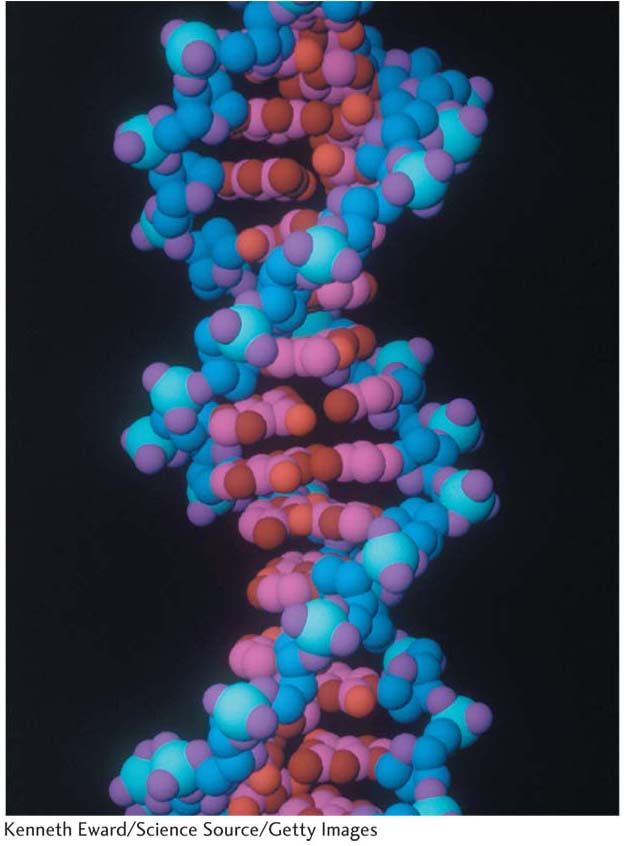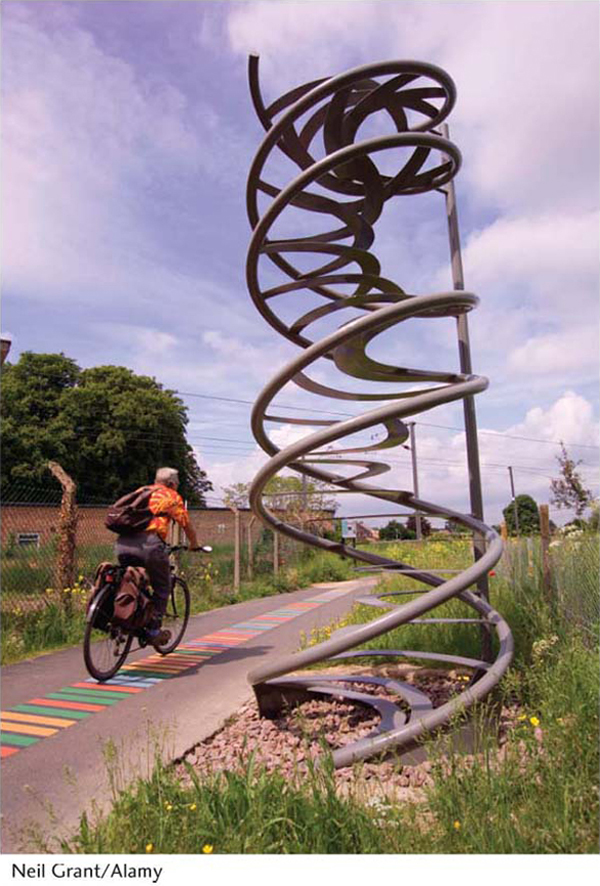Chapter Introduction
DNA: Structure and Replication
259
DNA: Structure
and Replication
CHAPTER
7
LEARNING OUTCOMES
After completing this chapter, you will be able to
Assess the types of evidence (historical and modern) that can be used to show that DNA is the genetic material.
Evaluate the data used to build the double-
helix model of DNA. Explain why the double-
helical structure suggests a particular mechanism for DNA replication. Illustrate the features of DNA replication that contribute to its speed and accuracy.
Explain why chromosome ends require special replication.
Predict the possible consequences to human health if end replication is defective.

OUTLINE
7.1 DNA: the genetic material
7.2 DNA structure
7.3 Semiconservative replication
7.4 Overview of DNA replication
7.5 The replisome: a remarkable replication machine
7.6 Replication in eukaryotic organisms
7.7 Telomeres and telomerase: replication termination
260

James Watson (an American microbial geneticist) and Francis Crick (an English physicist) solved the structure of DNA in 1953. Their model of the structure of DNA was revolutionary. It proposed a definition for the gene in chemical terms and, in doing so, paved the way for an understanding of gene action and heredity at the molecular level. A measure of the importance of their discovery is that the double-
The story begins in the first half of the twentieth century, when the results of several experiments led scientists to conclude that DNA is the genetic material, not some other biological molecule such as a carbohydrate, protein, or lipid. DNA is a simple molecule made up of only four different building blocks (the four nucleotide bases). It was thus necessary to understand how this very simple molecule could be the blueprint for the incredible diversity of organisms on Earth.
The model of the double helix proposed by Watson and Crick was built upon the results of scientists before them. They relied on earlier discoveries of the chemical composition of DNA and the ratios of its bases. In addition, X-
The proposed structure of the hereditary material immediately suggested how it could serve as a blueprint and how this blueprint could be passed down through the generations. First, the information for making an organism is encoded in the sequence of the nucleotide bases composing the two DNA strands of the helix. Second, because of the rules of base complementarity discovered by Watson and Crick, the sequence of one strand dictates the sequence of the other strand. In this way, the genetic information in the DNA sequence can be passed down from one generation to the next by having each of the separated strands of DNA serve as a template for producing new copies of the molecule.
In this chapter, we focus on DNA, its structure, and the production of DNA copies in a process called replication. Precisely how DNA is replicated is still an active area of research more than 50 years after the discovery of the double helix. Our current understanding of the mechanism of replication gives a central role to a protein machine, called the replisome. This complex of proteins coordinates the numerous reactions that are necessary for the rapid and accurate replication of DNA.